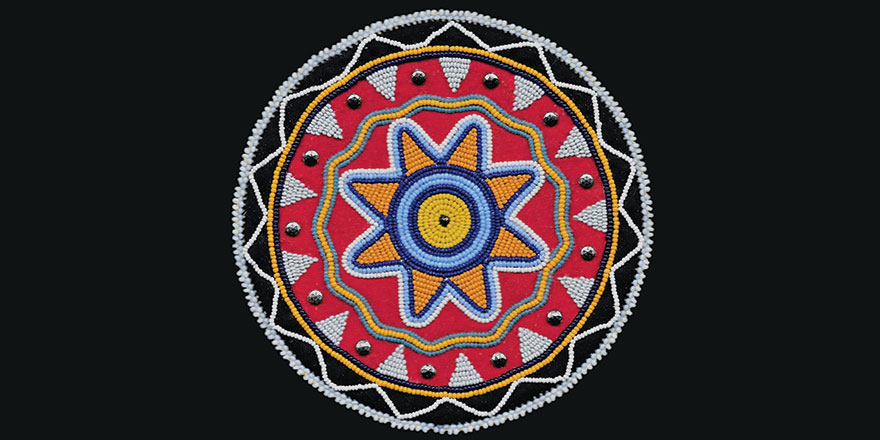Alum’s Beadwork to Appear on Marvel TV Show
The artwork of a Whittie may be in Marvel’s Echo
By Casey Brown
Photography by Roger Amerman ’80

The artwork of Whitman College alum Roger Amerman ’80, enrolled member of the Choctaw Nation of Oklahoma, may soon be featured in one of the largest movie franchises in the world. The Marvel Cinematic Universe has earned $25 billion worldwide since 2008 and has produced 40 movies and television shows in the last 15 years.
Coming to Disney+ later this year or early next year, “Echo” tells the tale of superhero Maya Lopez, a Choctaw woman, who can perfectly mimic any physical movement after only seeing it once, which makes her a great fighter and ballerina, among other abilities. She is played by Alaqua Cox, Menominee and Mohican, in her acting debut. Both Lopez and Cox are Native American and disabled, which is a form of representation both communities are celebrating.
Fire & Sun
Echo will likely be sporting a design based on the beadwork of Amerman who hand beaded designs using traditional Native American materials and techniques.
“It might not sound like much, but a teenager a year from now watching a superhero show will see Sun and Fire designs,” Amerman says.
Marvel had their eye on the look and feel of certain cultures, and Amerman says they knew they wanted a Choctaw design for part of Echo’s costume. They landed on a sun design and fire design, which happen to be the most “sacred and holiest designs,” dating back 2,000–3,000 years, Amerman says.
“We and our cousin tribes are the only people who use it in North America … My tribe has an extreme reverence for the sun. It supplies energy to all of Earth. That isn’t hypothetical, that’s real. The sun is holy,” he says.
In the middle of Echo’s utility belt, there could be a medallion designed by Amerman. He constructed the piece using a two-needle applique, contour technique, and Czech glass beads. The belt in the show may include beads or they may choose to use a computer-generated design based on Amerman’s submission.
Working with Marvel was a unique experience for Amerman. He appreciates how they are invested in portraying Native American culture in an accurate way.
“Unlike old Hollywood, they want to get it authentic,” he says.
Culture & Collaboration
Amerman received a call about the show because he was recommended by a tribal archeologist who happened to know that he has specialized knowledge about the Choctaw Nation. Marvel was interested in incorporating Choctaw history and customs in the show.
Several other people got the same call. Many people worked on Cox’s costume and the show as a whole.
“Marvel is not just working with many Native Americans, they are working with Choctaw Nation individuals and departments of the Choctaw Nation to make something authentic and have true integrity as Choctaw … Not just people who look stuff up and read books but actual people who know.”
The beading process took about five months and entailed many, many packages mailed back and forth between Amerman and Marvel.
“Just like any beadwork project, much of it is putting a lot into design, materials and composition. I put a lot of time into that and Marvel does too, so we kept going back and forth.”
Along the way, Amerman worked with other artists and costume designers. Ultimately, Marvel chose a design that is close to what Amerman submitted—but uses a more subdued color palette.
He hopes when the show debuts that viewers will ask questions like what is that design, how old is it and who uses it in modern times?
“I want to spark conversations about our culture.”